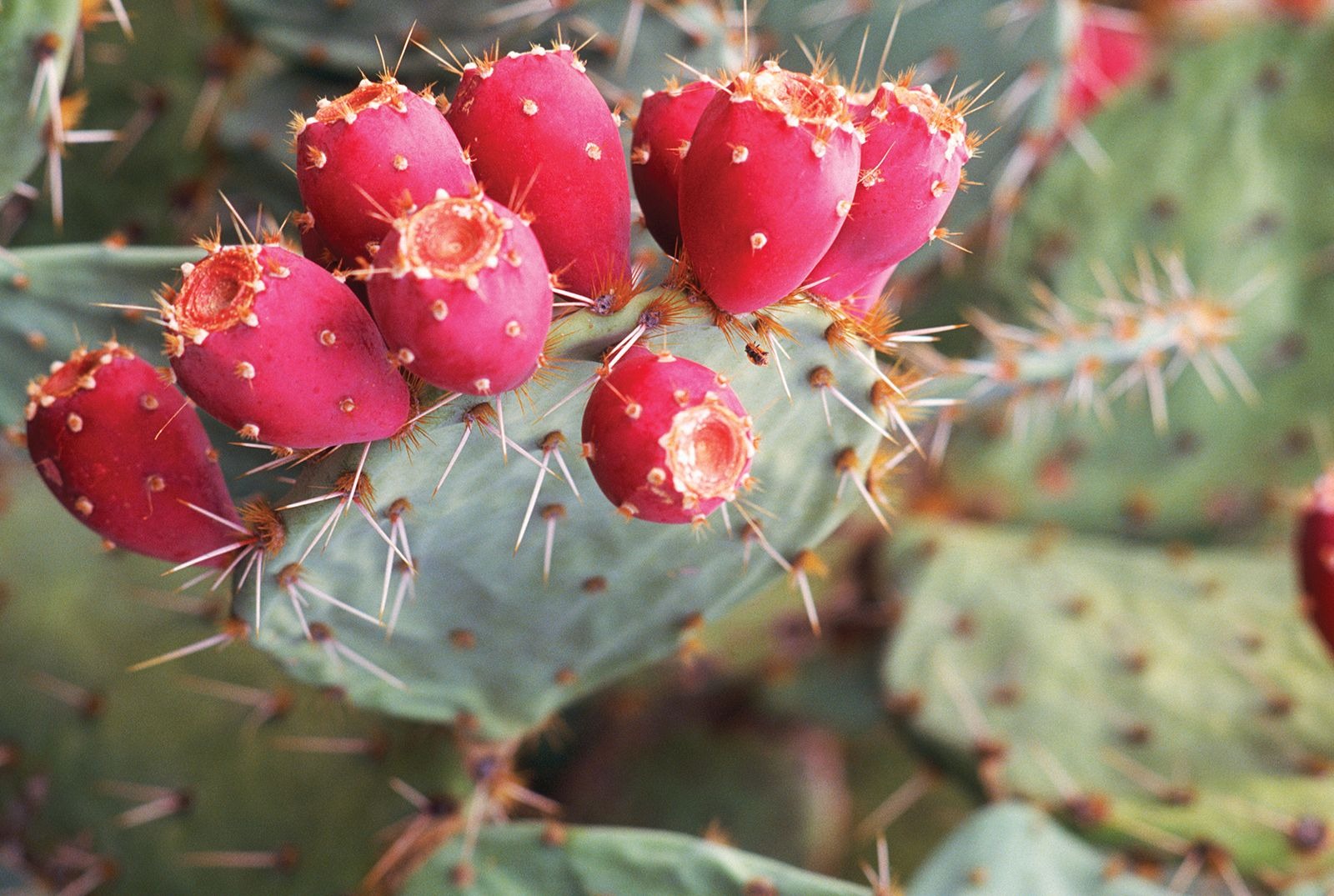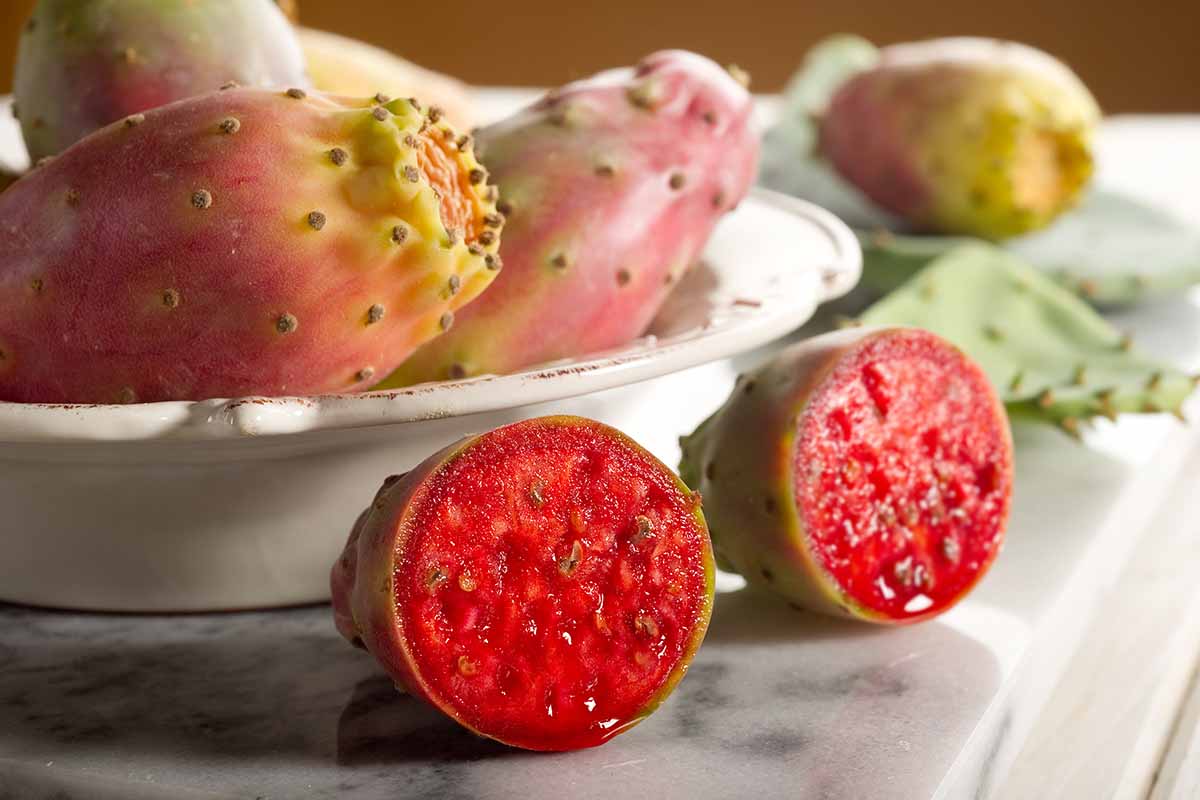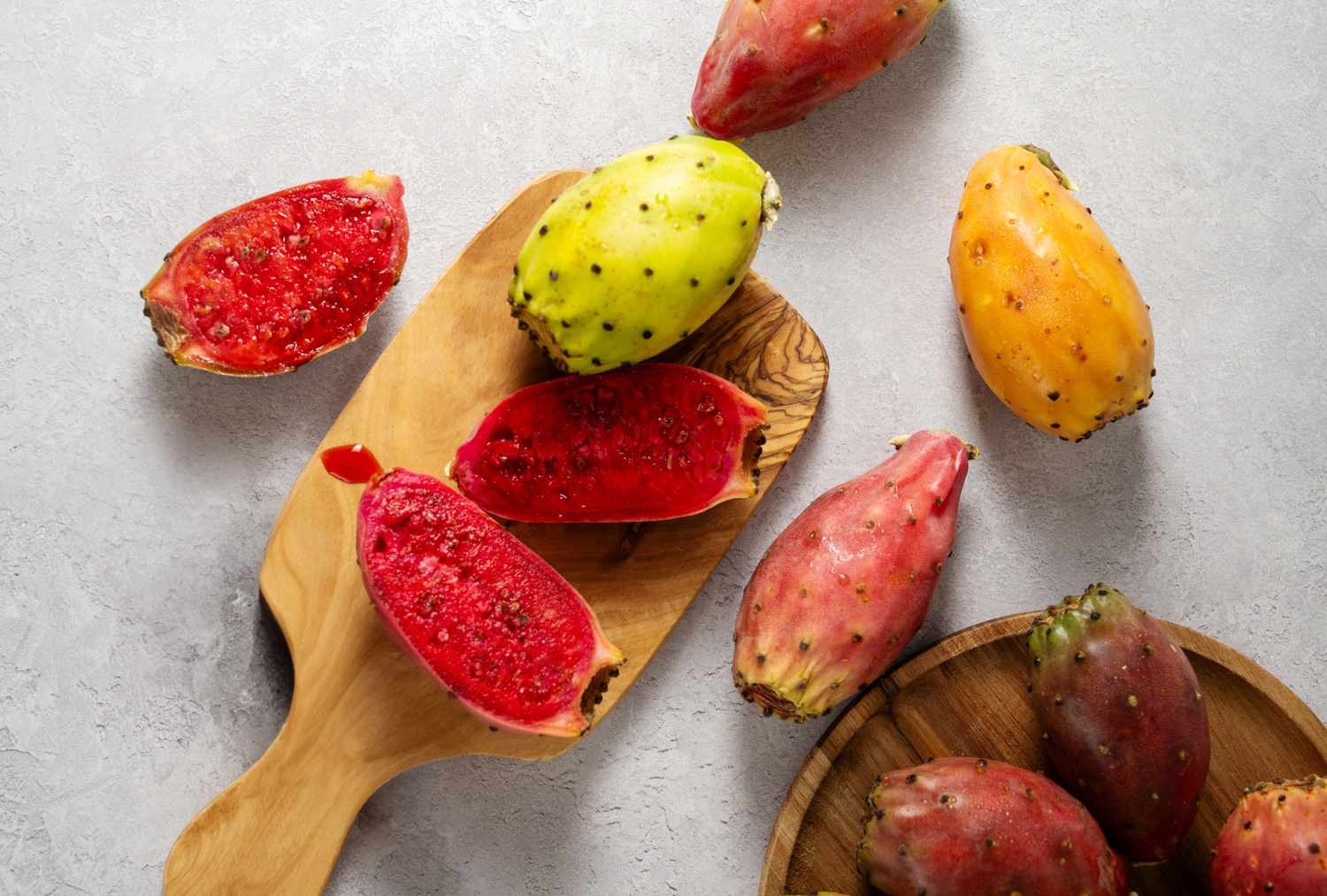
Prickly pears are the fruit of a cactus found in many parts of southern Italy and the Mediterranean.
In fact, they originally come from Central America and are rich in fiber, vitamins, and minerals. They’re an excellent food, perfect for avoiding nutritional deficiencies—especially in the summer.
The prickly pear is one of the symbols of southern Italy. But despite its name, this fruit—and especially the plant it grows on—does not come from Mediterranean countries and has nothing to do with India. It actually originates in Mexico and was brought to Europe, Africa, and even parts of Asia by Spanish explorers.

What is prickly pear?
The prickly pear cactus, known scientifically as Opuntia ficus-indica, belongs to the cactus family (Cactaceae). It has broad, thick, flat pads covered with sharp spines. It produces beautiful, colorful flowers that develop into bulb-shaped edible fruits, also known as “tunas.”
Why are they called “prickly pears” in Italian—fichi d’India—if they come from Mexico? The story goes back to Christopher Columbus. In 1492, upon arriving in the Americas, he believed he had reached India. When he brought these fruits to the Spanish royal court, they were given this exotic name. The Aztecs, however, had long called them nopales.
The fruits come in vibrant colors, ranging from yellow to red, often creating striking contrasts. Their shape can vary depending on the season—rounder fruits are early harvests, while elongated ones are late-season. They typically weigh between 150 and 400 grams.

Nutritional Values (per 100 g of fruit)
While the fruit is the most commonly eaten part, the flower petals and pads are also edible. Here are the average values for 100 grams of fruit (most fruits weigh over 150 grams):
• Water: 83.2 g
• Calories: 63 kcal
• Protein: 0.8 g
• Fat: 0.1 g
• Cholesterol: 0
• Carbohydrates: 12 g
• Fiber: 5 g
• Sodium: 1 mg
• Potassium: 190 mg
• Calcium: 30 mg
• Phosphorus: 25 mg
• Iron: 0.4 mg
• Vitamin C: 18 mg
• Vitamin A (retinol equivalent): 10 μg

Health Benefits
Prickly pears have so many beneficial properties that they’re often considered a superfood. In traditional Mexican medicine, the pulp and cactus juice have been used to treat skin wounds, stomach bloating, digestive issues, and urinary tract infections.
Nutritionally, they’re a great source of potassium, calcium, phosphorus, vitamin C, and vitamin A. They’re also high in fiber, which helps with constipation, and are relatively low in calories.
Possible Side Effects
Prickly pears are generally safe to eat, but some people may experience nausea, mild diarrhea, or bloating. Eating too many can cause intestinal blockage. People with diabetes should be cautious, as the fruit can lower blood sugar levels—especially risky for those with hypoglycemia or on blood sugar–lowering medication.

How to Eat Them
To enjoy prickly pears, you first need to harvest and peel them—a process that’s not as straightforward as it sounds because they’re covered in spines. Wear gloves and rinse the fruits under running water to clean them and soften the spines. Slice the skin lengthwise and peel it away vertically, removing both ends first. You can then slice the fruit and eat it fresh, add it to fruit salads, make jams or juices, or pair it with meat dishes.